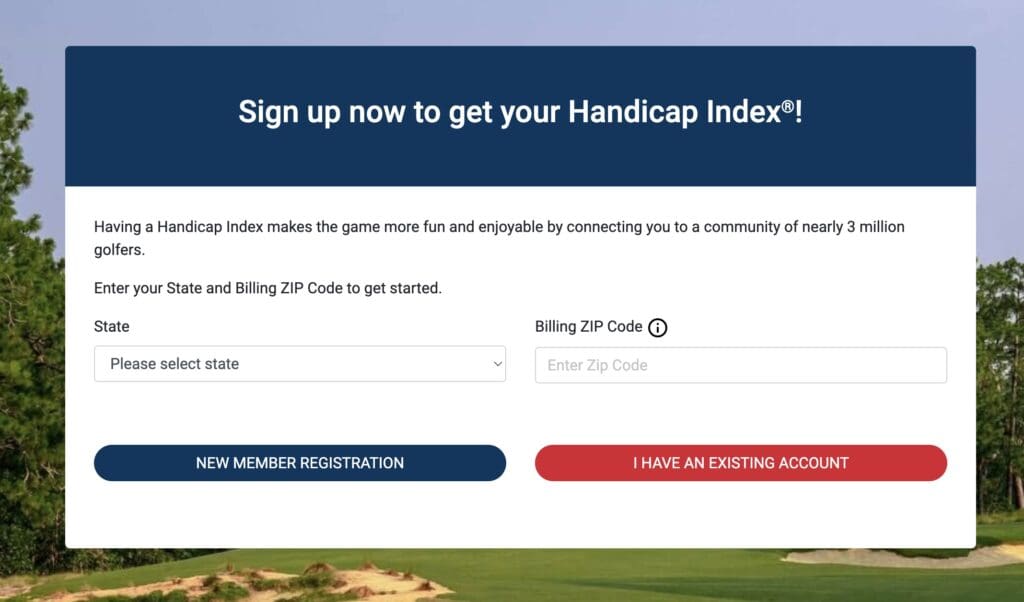Did you know that the rules of golf were first written down in 1744? Golf has been a popular game ever since, and it is a great way to compete with your friends and family. It is also a great way to spend your time if you love the professional competitive aspect of it.
But when you’re playing with others of different skill levels, a golf handicap index may be necessary. You might be wondering, “How can I calculate my golf handicap?” What is a golf handicap, and why is it necessary?
What happens if you decide not to use one? Keep reading and learn more about how the handicap system works below.
What You Need to Know About Golf Handicaps
You may have heard of a golf handicap before, but you may not know what it is. It is a relatively new addition to the sport. Because it’s so new, many people don’t know what it is or what it’s designed to do.
While it might not be important for more casual games of golf, it becomes necessary once you get into the more competitive side of things. The official name for it is the USGA’s Handicap System or the world handicap system. This system allows people of all different ages, experience levels, and genders to compete with each other.
But is a handicap necessary when playing with others? It depends. Suppose you’re playing a game of golf with an old man, a child, and a professional golfer with years of experience.
The old man might have played golf for years on and off, but he may not have the same skill level as a professional golfer. His old age may also prevent him from hitting the ball as hard or as far as he wants to. The child may know the basics of the sport, but not much more than that.
The child’s small size may also leave them at a disadvantage when hitting the ball. The professional golfer has the most skill out of the bunch. Without a handicap, the professional would win every time.
But this is no fun for anyone else playing. The official handicap system uses a handicap index that allows these different players to play fairly against one another. The handicap index is a numerical rating.
It relates the player’s scores based on their skill level as well as the difficulty of the golf course.
How It Works
Some golf courses are very simple and don’t weigh much in a handicap calculation. Others are full of hills, ponds, and obstacles that make it difficult to finish the game.
This score gives a more precise measurement of how a player should rank in the game. If you get a low handicap score, this usually means that you are a more skilled golfer. If you have a high score, you may need to fine-tune your skills.
But what does the numeric value of the handicap index mean? Relative to par, the number acts as a symbol for how many extra strokes you would need. Suppose you’re playing on a traditional 72-par golf course.
Then suppose your handicap index is 4. This means that, on average, you would need 4 extra strokes relative to par. This would total a 76 golf course handicap.
The course handicap takes into account the difficulty of the course itself. You will need to consider the course rating, the slope rating, and so on. You would then have to relate this score to the player’s handicap index.
This would allow the player to determine how many strokes they might need depending on the tees they start at. If the course rating and the slope rating are both high, the course will be much harder than average.
119 countries worldwide have started using the handicap system since it was officially introduced in 2020. If you love golf and are serious about this sport, you must be familiar with how the handicap system works.
It is also important if you find yourself playing with more experienced players. This ensures that you have a chance to show your skill.
How to Calculate My Golf Handicap System
The good news is that setting your gold handicap index is very easy. You first need to consider your 20 most recent scores. Discard all of them except for the 8 best scores.
Add the 8 scores together. Whatever the total is, divide it by 8. This will then give you the handicap index you need to play the course.
Add this number to the course’s par. This extra number will act as the number of extra strokes you will need to finish the course. Doing this should work for most average courses.
But remember that this number will change as you continue to play golf. If you take this number while you are still a beginner, you will likely need to play many extra strokes due to your low skill level. But the more experienced you get, the fewer strokes you will need.
This is why you should regularly calculate your golf handicap. After a month or so of regularly playing golf, you may find that your handicap index is far better than it used to be. You may find yourself at a point where you no longer need to use a handicap in most situations.
Other people may need to use a handicap index to keep up with you instead. If you want to make sure that you keep up with your handicap index, make sure you record your scores every time you play golf. The 8 highest scores are always the most important since they are what determine your handicap index.
The Best Way to Calculate
If you are serious about getting the right index for your skill level, you can also get an official handicap rating. But you need to be part of a golf association to accomplish this. If you join an Allied Golf Association or are already part of one, you’ll be on the right track.
If you aren’t sure where to start, consider contacting a golf professional. If you have any friends who have a lot of golf experience, you can ask them about it as well. This may make it easier to get involved in a golf club or association.
You can also go to the USGA’s (United States Golf Association) website. This association is in control of the creation of golf rules and regulations in the United States. Their website has all the information you could ever need regarding golf handicaps.
Also through the USGA is the GHIN app, which will track your handicap as you enter your scores after each round. This is highly recommended.

It will guide you through the handicap indexing process so that you don’t make any mistakes when calculating your score. Once you have your handicap score, you can use it for whatever golf course you play on.
Other Factors to Consider About Golf Handicaps
Most of the time, you won’t need to worry about any other factors once you calculate your handicap index. But if you play on anything other than an average course, you may experience some issues. This is because certain golf courses may be much more difficult than your average course.
This requires you to pay more attention to your handicap score and the course’s score. Suppose you want to find out the course handicap. Here is a simple formula you can use to figure it out:
[Handicap Index * (SR / 113)] + (CR- Par)
Some people might immediately decide that the course handicap is too complicated to figure out by looking at this formula. But it is very straightforward. SR stands for slope rating.
CR stands for course rating. You can find both of these metrics on your scorecard. It may also be on a sign near the course’s entrance. Divide the slope rating by 113 to get the course’s average slope rating.
Subtract the CR from the course’s par. Then, add that number to the average slope rating for the course. Multiply the total by your handicap index.
You will then have the course handicap. This simple formula allows you to find the course handicap of any course you go to. This is an especially useful formula to use when you’re playing on more advanced courses.
Why a Golf Handicap Is Important
How can I calculate my golf handicap? Doing so is easy as long as you’re familiar with your most recent and best 8 scores. You can also calculate the course handicap once you have your golf handicap index.
Having this score is a great way to keep up with players of different skill levels. Are you ready to learn more about golf? Check out the info we have to offer that can help you.
